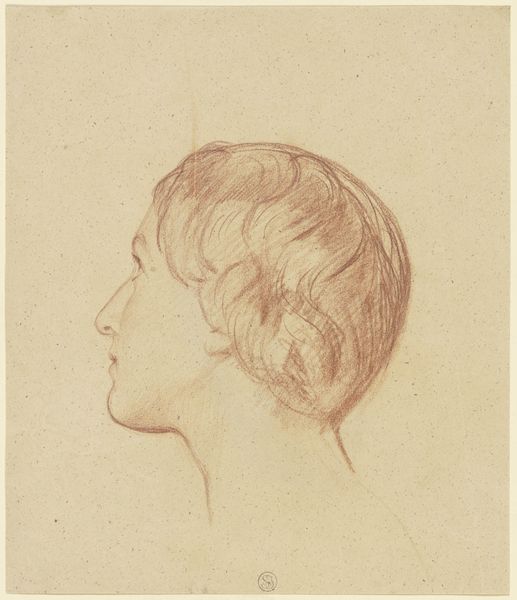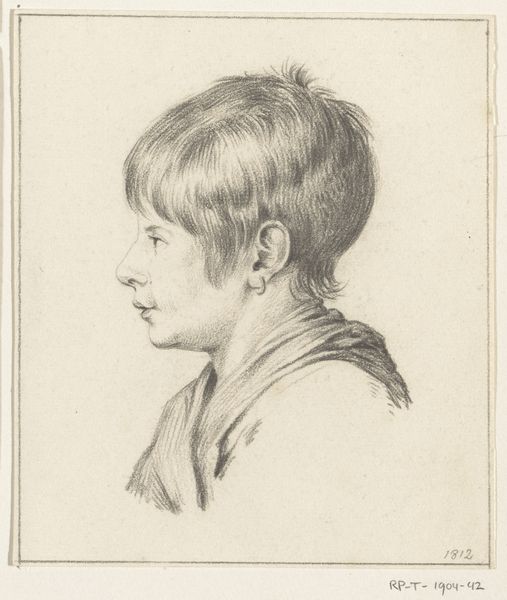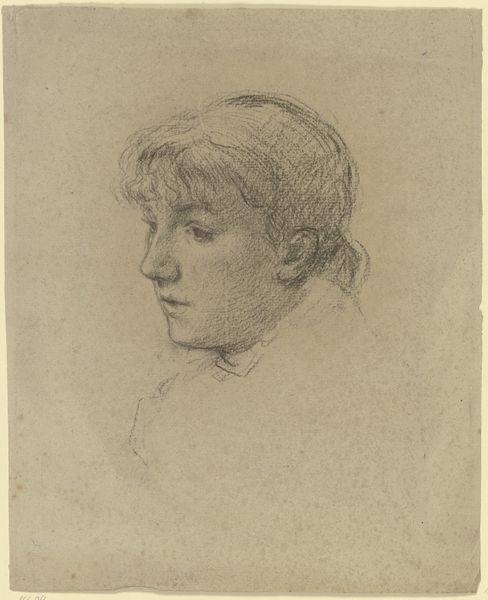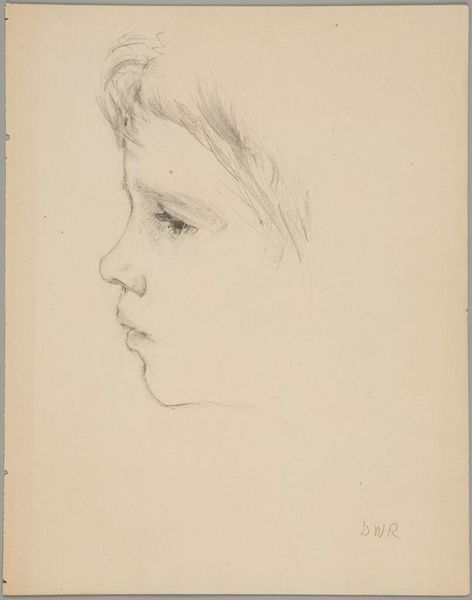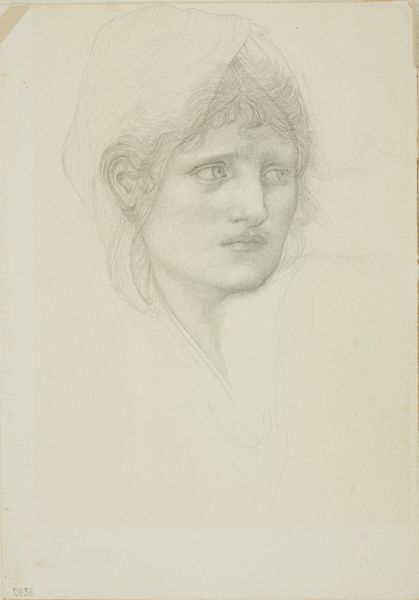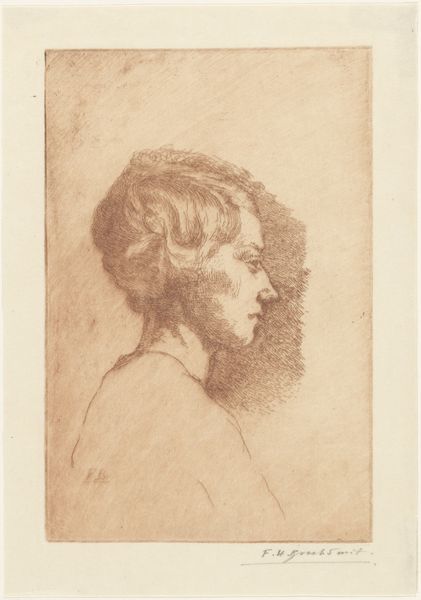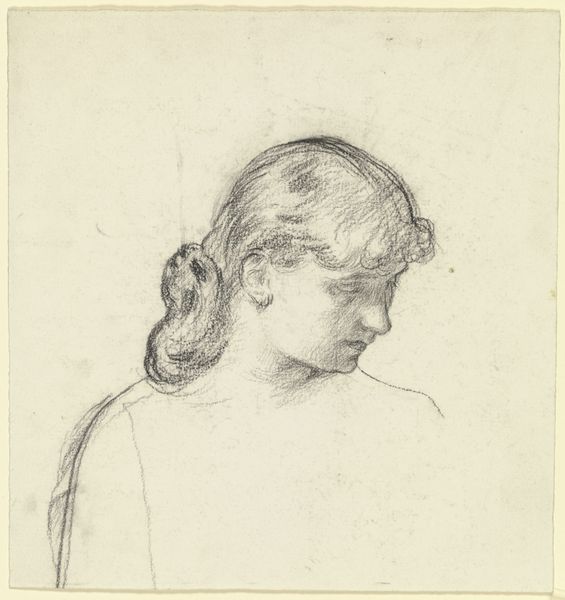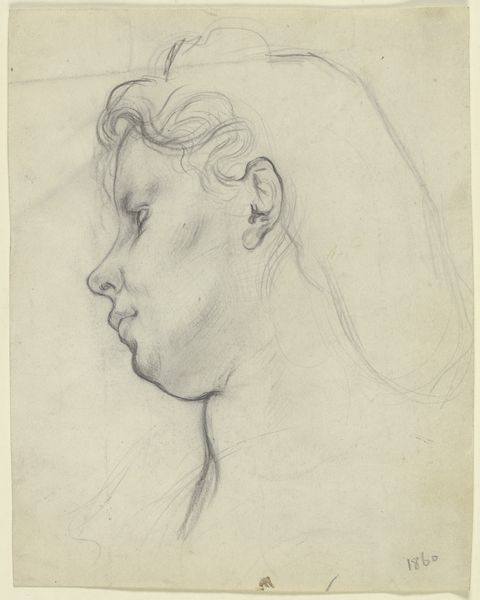
drawing, print, paper, dry-media, pencil, chalk, black-chalk
#
portrait
#
pencil drawn
#
drawing
#
self-portrait
# print
#
pencil sketch
#
paper
#
dry-media
#
pencil drawing
#
pencil
#
chalk
#
portrait drawing
#
black-chalk
Dimensions: 271 × 193 mm
Copyright: Public Domain
Pierre Puvis de Chavannes made this drawing, Head of a Woman, with graphite on paper. It's an understated work, but it offers insight into the artist's relationship with academic tradition in late 19th-century France. Puvis de Chavannes was working at a time when the French Academy still held considerable power over the art world, dictating standards of taste and artistic training. The artist's classicizing style was in part shaped by his ambition to undertake large-scale public commissions. By referencing classical ideals of beauty, he aligned himself with established cultural values and artistic conventions, while also moving towards symbolism. But how does the image create meaning? The profile view, the soft modeling, and the attention to anatomical detail recall the traditions of Renaissance portraiture, while also hinting at the symbolist movement which favored subjective experiences. Understanding Puvis de Chavannes requires us to consider archival sources, exhibition histories, and critical reviews, which help to illuminate the artist's place in the cultural landscape of his time.
Comments
No comments
Be the first to comment and join the conversation on the ultimate creative platform.
